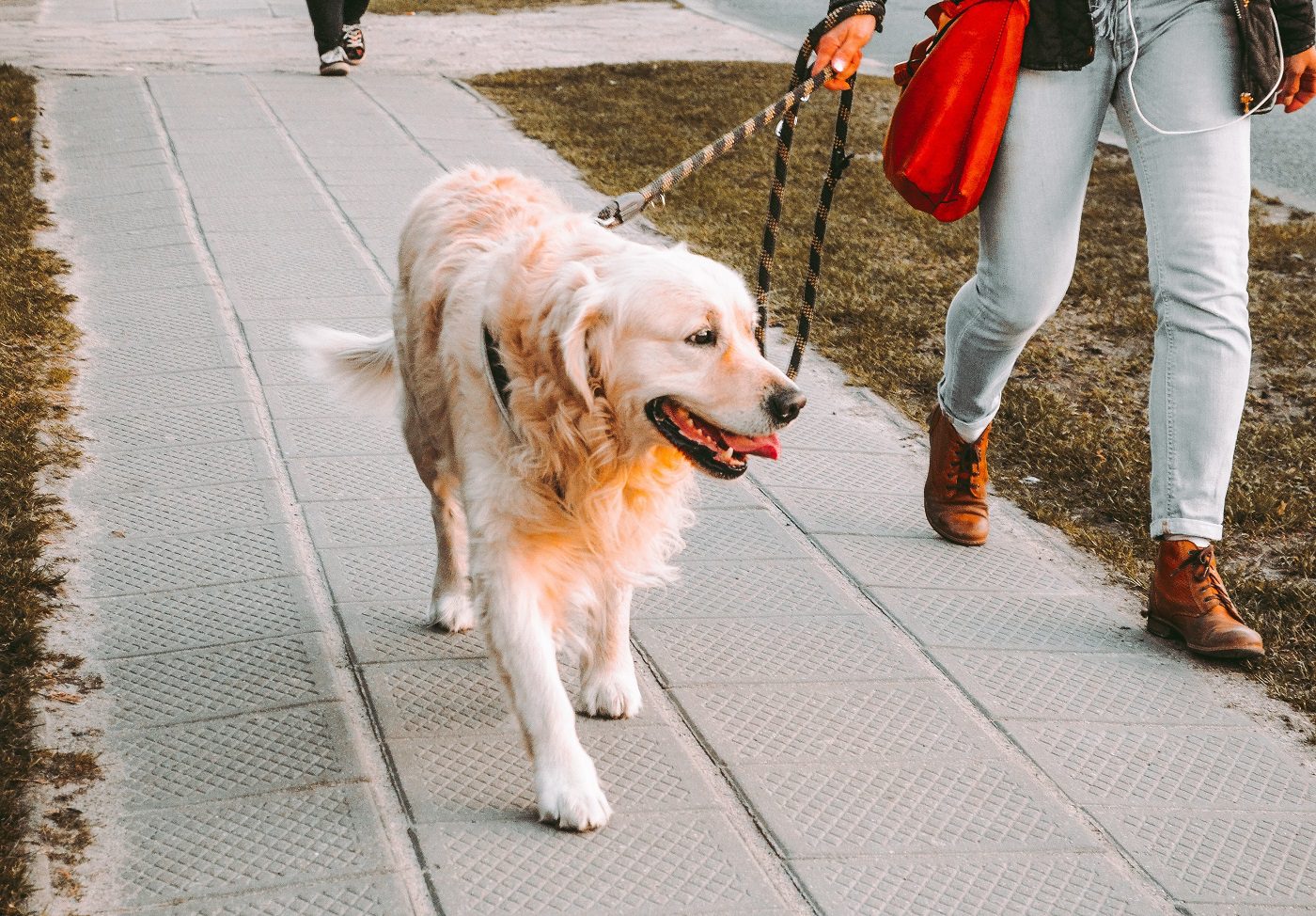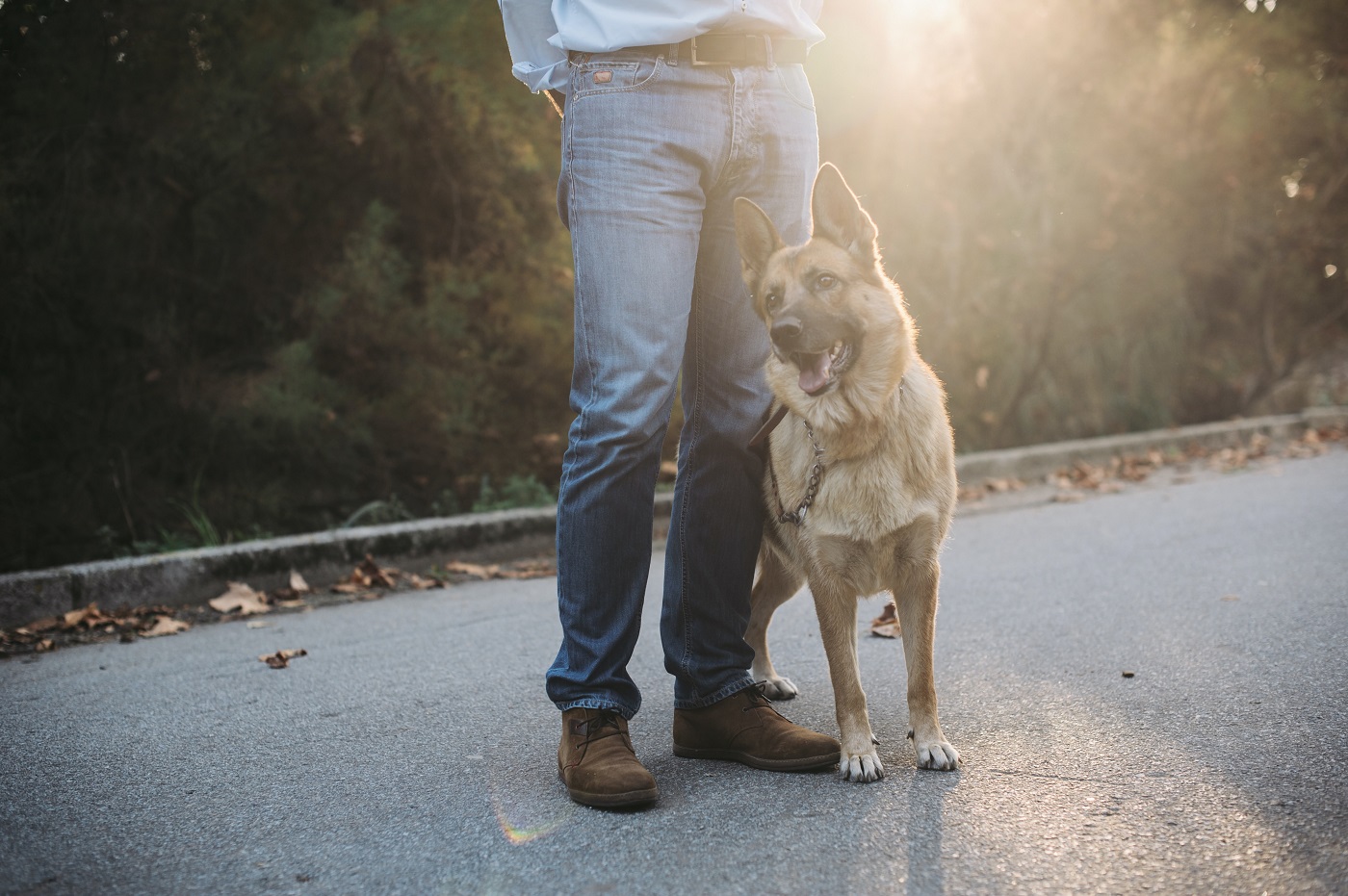Walking your dog should be a joyful experience for both you and your furry friend. However, if your dog constantly pulls on the leash, it can turn an enjoyable stroll into a frustrating tug-of-war. In this comprehensive guide, we will explore various strategies and tips to help you effectively walk a dog that pulls. By understanding the reasons behind this behavior and implementing the appropriate training methods, you can foster a positive walking experience for both you and your canine companion.
1. Use a No-Pull Lead
One of the most effective tools for managing a dog that pulls is a no-pull lead or harness. These specialized devices are designed to discourage pulling by distributing pressure more evenly across your dog’s body. The most common types include front-clip harnesses and slip leads. We personally prefer the latter: slip leads such as this one, are designed to fit over your dog’s neck without choking them. When your dog pulls, the head halter gently redirects their head, making it more difficult for them to pull with force.
2. Try Reverse Direction
Dogs often pull because they are eager to reach something ahead, whether it’s a squirrel, another dog, or simply a fascinating scent. To counter this behavior, try the reverse direction technique:
- When your dog starts to pull on the leash, simply stop walking.
- Wait for your dog to turn and look at you, even if it takes a moment.
- Once your dog redirects their attention toward you, reward them with praise and a treat.
- Then, resume walking in the opposite direction.
By repeating this process consistently, your dog will learn that pulling on the leash results in walking away from the desired object or destination. Over time, this can help reduce pulling behavior.
3. Reinforce The Good Behavior
Positive reinforcement is a powerful tool in dog training. When your dog walks nicely on the leash without pulling, it’s crucial to reward them for their good behavior. Here’s how you can reinforce positive behavior:
- Carry small, tasty treats with you during walks.
- Whenever your dog walks calmly by your side without pulling, offer verbal praise and a treat.
- You can also use a clicker to mark the desired behavior, making it clear to your dog what they are being rewarded for.
Consistency is key when using positive reinforcement. Over time, your dog will associate walking politely with receiving treats and praise, making them more likely to repeat the behavior.
4. Stop immediately when your dog starts pulling
Consistency is essential in teaching your dog not to pull on the leash. When your dog starts pulling, stop walking immediately. Here’s how to implement this technique effectively:
- As soon as you feel tension on the leash, stand still and hold the leash firmly but without excessive force.
- Wait for your dog to release the tension and come back to your side.
- Once your dog relaxes the leash and walks calmly beside you, praise them and continue walking.
- If your dog continues to pull, repeat the process by stopping each time they pull.
- This method helps your dog understand that pulling won’t get them to their desired destination any faster and encourages them to stay by your side for a more pleasant walk.
5. Be Patient and Consistent
Training a dog not to pull on the leash takes time and patience. Every dog is unique, and some may respond more quickly than others. Stay consistent in your training methods, and be patient with your furry companion. Avoid resorting to punishment or harsh corrections, as this can create fear or anxiety and make the problem worse.
6. Seek professional help if needed
If your dog’s pulling behavior persists despite your efforts, consider consulting a professional dog trainer or behaviorist. They can provide personalized guidance and help address any underlying issues contributing to the pulling behavior. Dog Shepherds has some excellent K9 trainers in-house who would be able to provide any assistance you may need.
Walking a dog that pulls on the lead can be a frustrating experience, but with the right techniques and a commitment to consistent training, you can turn those walks into enjoyable outings for both you and your furry friend. Remember to use a no-pull lead, try the reverse direction technique, reinforce good behavior with positive rewards, and stop immediately when your dog starts pulling. Patience, consistency, and a focus on positive reinforcement are key to successfully walking a pulling dog. With time and effort, you can transform your walks into pleasant bonding experiences with your canine companion.
Happy dog walking!


